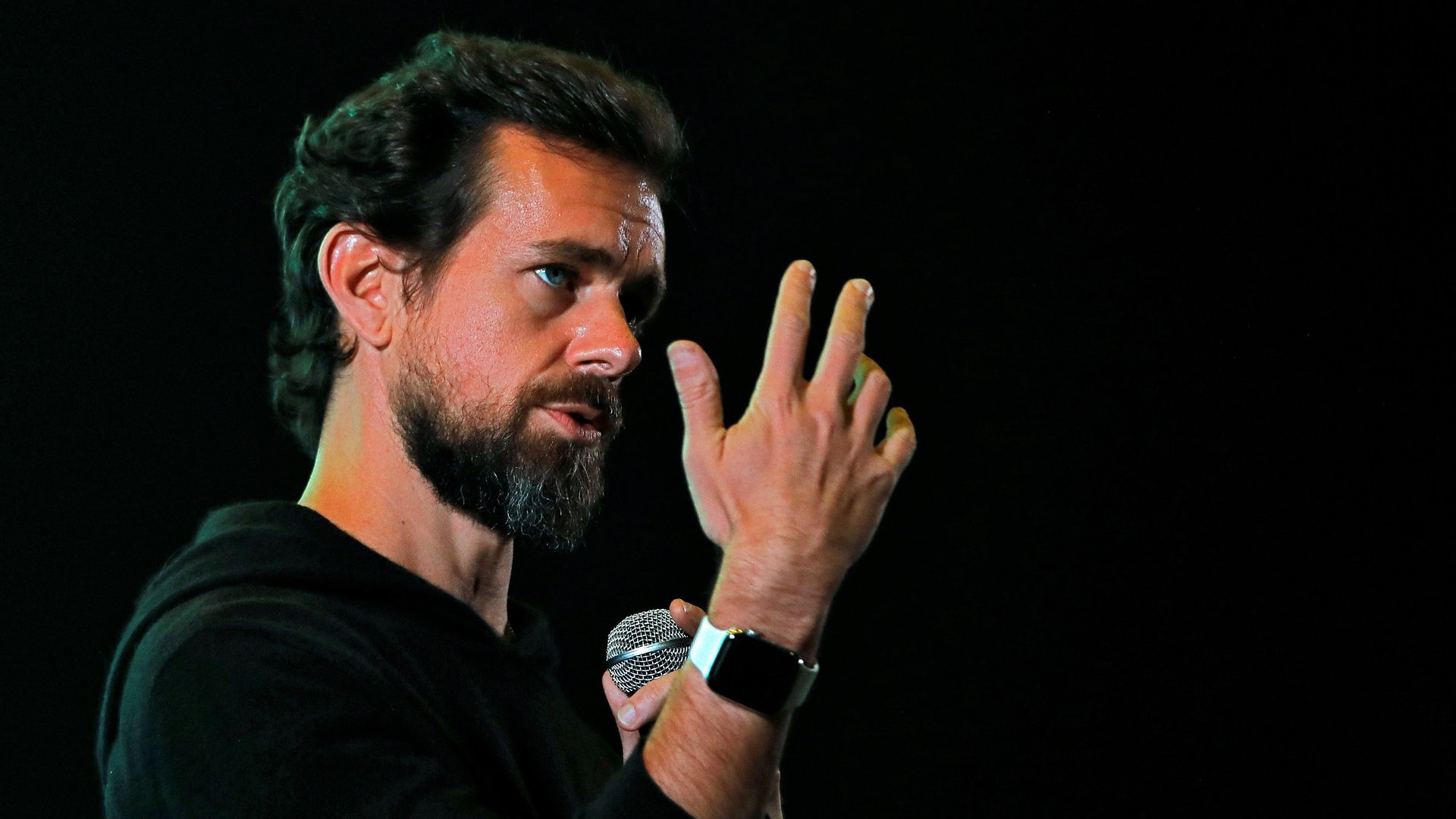Jack Dorsey missed the point of meditation on his Myanmar retreat
Jack Dorsey just came back from a 10-day silent retreat in Myanmar and, of course, tweeted about meditation practice.


Jack Dorsey just came back from a 10-day silent retreat in Myanmar and, of course, tweeted about meditation practice.
The revelation upset many because the Twitter CEO gushed about Myanmar and made no mention of the persecution of the Rohingya people, the Muslim ethnic minority forced to flee to nearby Bangladesh in the hundreds of thousands. If meditation is meant to make practitioners more aware and compassionate, Dorsey’s practice appears to have failed on that front.
It fell short in other areas, too.
In a tweet thread, Dorsey talks about his experience in a monastery and the idea behind Vipassana meditation, which is to “know thyself,” cultivate detachment from desire, and thereby minimize suffering. ”During the 10 days: no devices, reading, writing, physical exercise, music, intoxicants, meat, talking, or even eye contact with others. It’s free: everything is given to meditators by charity,” Dorsey explains.
Yet, he did wear his Apple Watch and Oura Ring, a sleep tracker, measuring his physiological responses to this philosophical project.
The problem with this—apart from indicating Dorsey’s inability to truly detach from technology—is that it misses the point of the very practice he was engaged in. Spiritual practice can’t be measured, not in quantifiable terms, and the notion of “best meditations” is problematic. The Buddha covered this precise point millennia ago, stating:
Just as when a carpenter or carpenter’s apprentice sees the marks of his fingers or thumb on the handle of his adze but does not know, ‘Today my adze handle wore down this much, or yesterday it wore down that much, or the day before yesterday it wore down this much,’ still he knows it is worn through when it is worn through. In the same way, when a monk dwells devoting himself to development, he does not know, ‘Today my effluents wore down this much, or yesterday they wore down that much, or the day before yesterday they wore down this much,’ still he knows they are worn through when they are worn through.
In other words, there is no physical measure of “success” in meditative practice. And Dorsey is quite intent on characterizing his meditations as more or less successful, best and worst. He writes, “The 2nd day was my best. I was able to focus entirely on my breath, without thoughts, for over an hour. The most I could do before that was 5 minutes. Day 6 was my worst as I caught a nasty cold going around the center. Couldn’t sleep from then on but pushed through til the end.”
What this admission reveals is that 10 days of silent meditation in a monastery in Myanmar didn’t teach Dorsey too much about detachment from notions of gain or loss, which the Buddha considered to be among the primary causes of human suffering. It indicates that he never stopped thinking about time or trying to accomplish something specific from his practice. And that’s definitive proof of attachment.
Dorsey remained obsessed with quantification. “We also meditated in a cave in Mandalay one evening. In the first 10 minutes I got bit 117 times by mosquitoes,” he writes. “They left me alone when the light blew a fuse, which you can see in my heart rate lowering.” Even if the number of mosquito bites he notes is a joke—though who knows, maybe he counted?—he’s focusing on some of the pitfalls of practice.
Indeed, if Dorsey’s retreat had really “succeeded” he probably would not have tweeted about it at all. And we’d have nothing to criticize because he would have realized that he doesn’t need to publicize his activities in order to confirm his existence and gain the approval of others.
While Dorsey arguably may have wanted to share the benefits of meditation with the masses—just in case you haven’t heard about it yet—his thread undermined the very lessons he intended to learn and pass on to others.
“The highlight of my trip was serving monks and nuns food, and donating sandals and umbrellas,” he writes.
But true humility doesn’t advertise itself or call attention to the good deeds of the doer. Dorsey’s revelation seems mostly to serve himself, to fortify the ego he ostensibly seeks to dissolve.
In his seminal 1973 essay, “Cutting Through Spiritual Materialism” about the pitfalls of meditative practice, Buddhist monk and meditation master Chogyam Trungpa warned, “Ego is able to convert everything to its own use, even spirituality. For example, if you have learned of a particularly beneficial meditation technique of spiritual practice, then ego’s attitude is, first to regard it as an object of fascination and, second to examine it.”
Dorsey’s tweets seem to illuminate these lessons. He’s fascinated by his spiritual project and analytical about its effects and success. Ultimately, he appears to be putting on a show (mostly for his own benefit) and not cutting through his materialism. Trungpa warned against this, writing. “When we have learned all the tricks and answers of the spiritual game, we automatically try to imitate spirituality, since real involvement would require the complete elimination of ego, and actually the last thing we want to do is to give up the ego completely.”
The whole tricky thing about the quest for enlightenment is realizing that questing, striving, is itself evidence of one’s ignorance. Perhaps on his next birthday, Dorsey will work on getting to know himself and we won’t hear about it at all.